The story of art is littered with the names of those who either started late, or found their success later in life. Japanese printmaker Katsushika Hokusai made his most famous work, The Great Wave, in 1830, when he was in his 70s. He wrote, self-deprecatingly, that, “until the age of 70, nothing that I drew was worthy of notice”. French post-Impressionist Paul Cézanne didn’t get his first solo show until 1895 – when he was 56.
One of the latest art-starters to make it big must be the American folk artist Anna Mary Robertson Moses (also known as Grandma Moses). She was born in 1860 and began her working life as a live-in housekeeper aged 12. She began painting in earnest at 76, when arthritis made the embroidery she so enjoyed too painful. She had her first solo show at 80, won awards and accolades during her life, and in 2006, long after the artist’s death, her 1943 painting Sugaring Off fetched $1.2 million at a Christie’s auction.
Her story also hints at why not all those with a burning talent for art start young. Economic or family needs can make some artists have to wait, yet the idea of “emerging” is still equated with “young”. Those “30 under 30″ lists tend to imply that you’ve had it by the time your third decade is through. Where does that leave space for wisdom, for the fruits of reflection, for the depth of a lifetime’s experience?
The passage of time, if we’re lucky, changes us, and the idea of a career-for-life is also changing. Whereas once you trained and became “a something”, now we’re opening up to the idea that what suited you at one phase in your life may no longer serve you in another. Here are three Irish artists with thriving encore careers.
Dominique Crowley
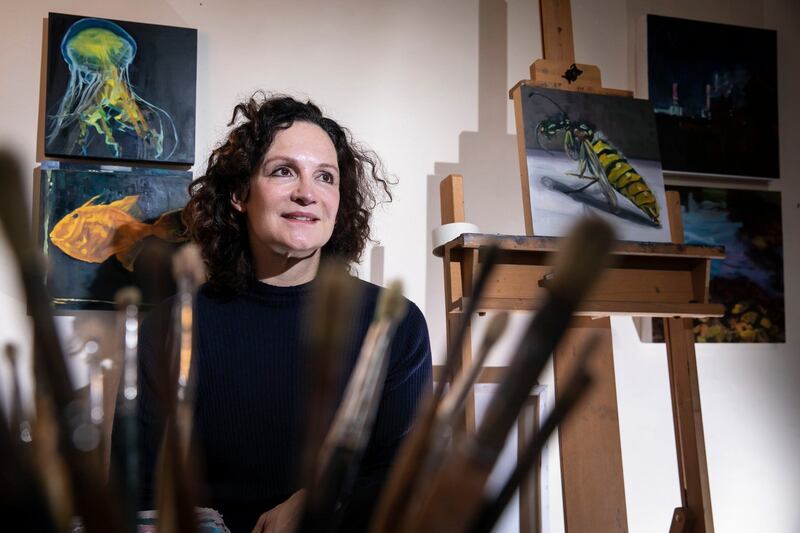
After her primary degree in medicine at University College Galway, Dominique Crowley graduated in 1989 and went on to further studies, including in child health and medical toxicology. A career in public health followed, although ongoing classes in drawing, ceramics and portrait painting were testament to her lifelong love of art. She finally made the leap to full-time art study while living with her family in Canada.
“I took a leave of absence,” she says. “It was my chance to go back to college and study art. It wasn’t so much an epiphany as an opportunity to satisfy that part in me that always wanted to do this, that always wanted to be creative.” Returning to Dublin with a first-class degree, she followed up with a master’s from NCAD. “I chose to keep going because I figured that there was a lot more I wanted to do in art. I knew that I have the rest of my life in front of me and I want to devote it to art. I’m happy with my choice, but I don’t regret what I did before. I really enjoyed my profession, my training, and my experience of working in medicine.
“There is a commonality in terms of critical thinking,” she says. Both disciplines are “trying to make you see things as they are, rather than as your mind expects them to be. That’s a useful skill. For example, with life drawing, you think you know what a body looks like, but if you park all that and just very slowly draw what you see, you’ll make more of a likeness. Otherwise you’ll draw a face that comes out the same as every single other face you’ve ever drawn.”
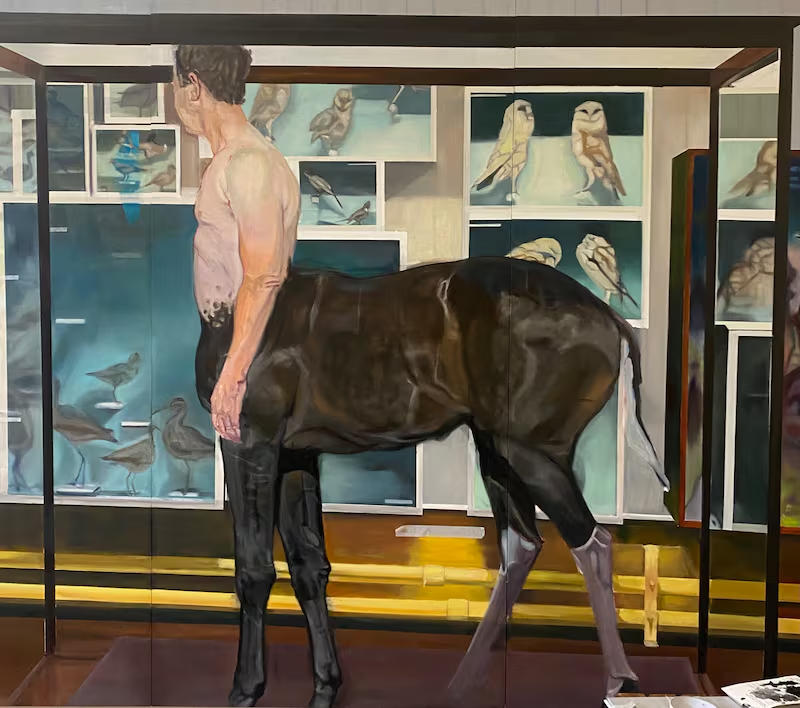
Her life experiences come through in her work, she says, and her latest series explores an imaginary natural history museum, delving into the nature of scientific knowledge, how we gather and prioritise information, and the fictional promise of certainty. “The actual practice of medicine is very scientific and systematic, whereas with art it’s very subjective, it’s very solitary, you’re always questioning yourself. I tell my kids: you can make a choice now to go to college, but don’t feel you have to stay in it forever. You do your best in it, and then if a time comes and you need to change, then change. As long as you’re happy and can live a good life.”
Dominique Crowley’s work costs from €4,000-€20,000. Her solo exhibition, Monstrorum, is at the RHA Ashford Gallery, January 11th-February 11th, 2024.
[ 2024 in art: 10 shows to look out for over the next 12 monthsOpens in new window ]
John Redmond
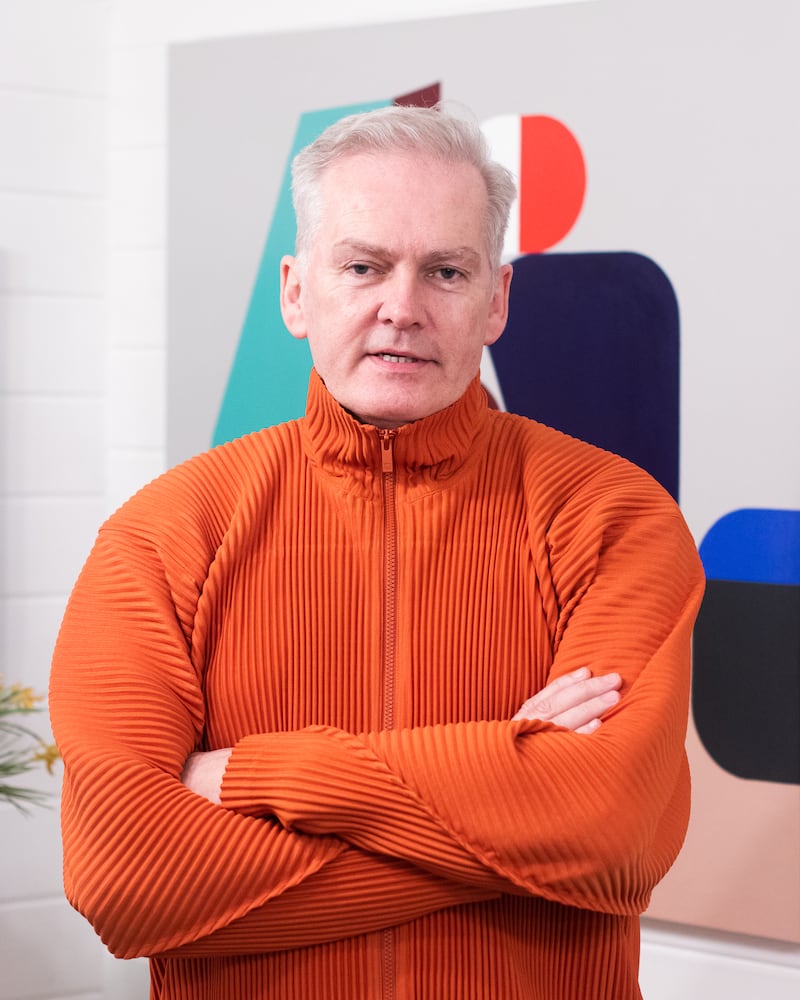
John Redmond had his first exhibition aged 50. He was previously group creative director with Brown Thomas, having started out as a visual display artist at Arnotts. “I always painted,” he says. “It was my yoga, a way of losing myself, and having total freedom.” He juggled these two strands for almost four decades, before making the switch to being a full-time artist two years ago.
“I loved Brown Thomas while I was there, but this is a different life. I don’t know myself, to be honest,” he says. “I’m on my own a lot more, in the studio painting. It’s a calmer way of working. My whole career I worked with teams, and I loved the people. That’s what I do miss.” While he shares his works-in-progress with wife, Karen, he is really “enjoying the fact that it’s just my mind from start to middle to end. That makes sense to me.”
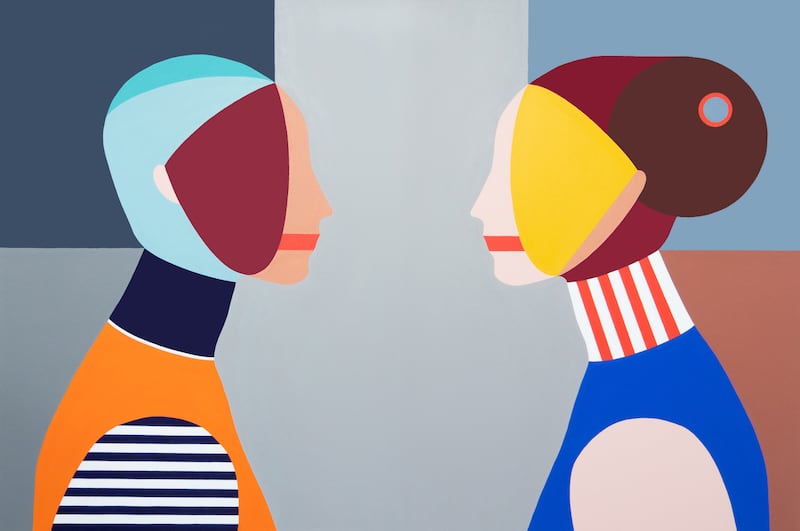
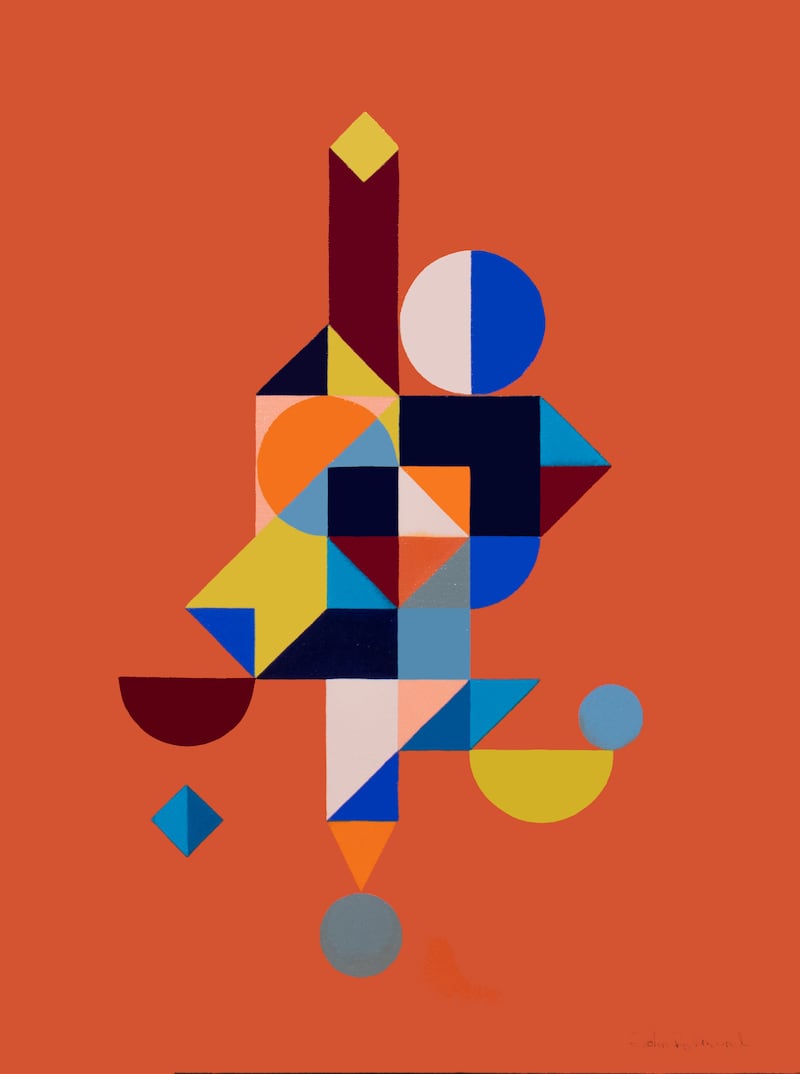
Although he took art classes periodically throughout his life, Redmond is mainly self-taught, and it is interesting to see how the depth of his work has evolved since he took the decision to make art his full-time occupation. After a recent, highly successful show with Gormleys, he has also been enjoying the public side of exhibiting. “I create it for me, but when I hear back from people that they like it – my goal is that the joyfulness I have in painting comes through to the viewer – then I’m really happy.”
Does this mean he wishes he had made the change sooner? “I don’t, actually. I’m happy with the age I am now. I feel comfortable. And I’m not the type of person that has regrets, I’m just really happy to be doing it now.” Time, and life, he says, have given him a confidence that has grown with the years, even as he makes sure always to stay receptive to new ideas. “All the things I have done, they help to get you to where you are now. Confidence and happiness can be similar. You conquer lots of things. Age helps.”
John Redmond’s work is for sale with Gormleys, costing about €2,400-€8,000, and work can be seen at gormleys.ie.
[ 2023 in art: The 10 best exhibitions of the yearOpens in new window ]
Karen Ebbs
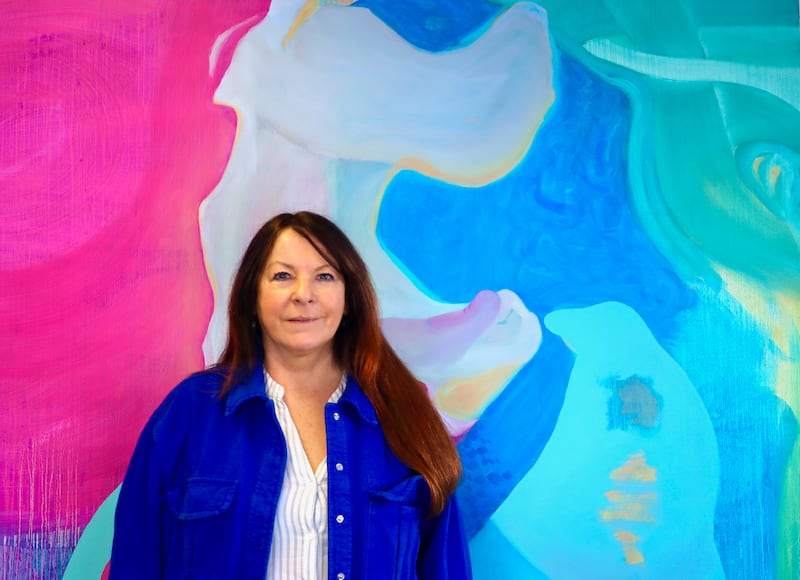
“As long as I can remember, it was colour for me,” says Karen Ebbs, who spent her first career as a therapist. “I saw how colour can bypass the need for talking in therapy, and it also gives people the chance to bypass the analytical part of their brain, to get directly to the emotional part.” Ebbs had always made art, but “I was also trying to support my children and bring them up. It wasn’t always easy – financially, and in many ways. You know, life’s curveballs ...”
With five children, things were hectic. “I used to set alarms so I wouldn’t forget to pick them up at school,” she says with a laugh. Now her children have children of their own, and having taken drawing and painting classes at the Royal Hibernian Academy, Ebbs credits the head of the RHA School, Colin Martin, with giving her the impetus to go to art college full time. She graduated with an MFA in painting from NCAD this year, and has had solo shows at The Lab and Farmleigh, with a forthcoming exhibition at Rathfarnham Castle later in 2024.
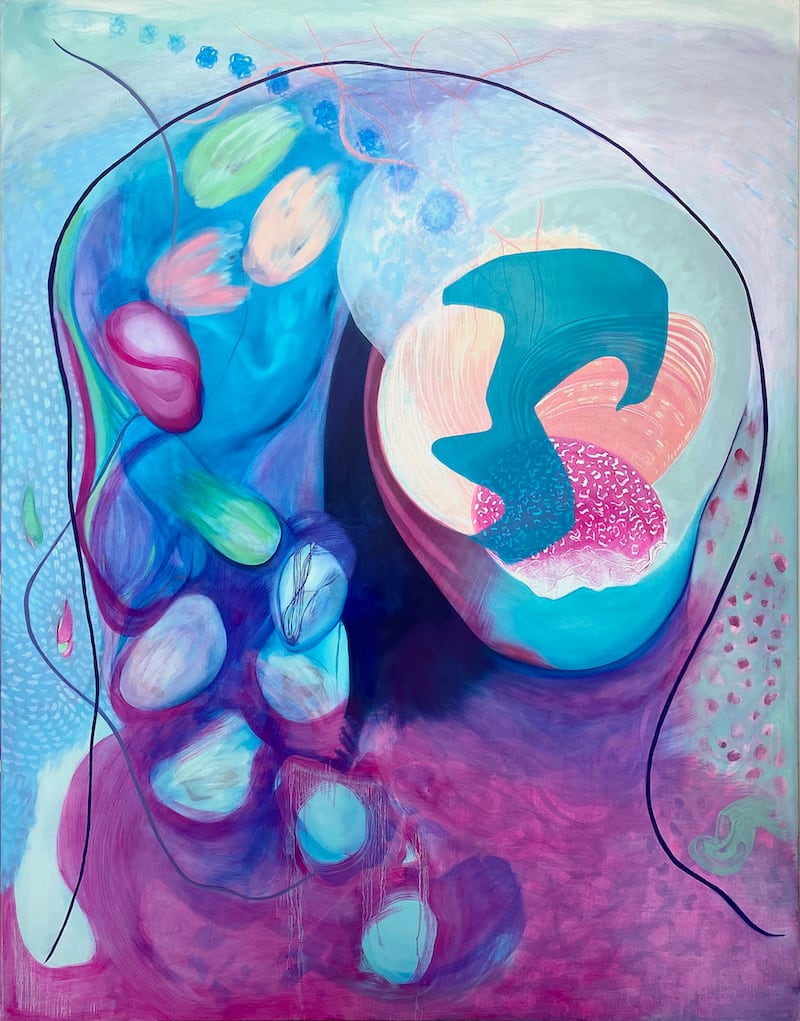
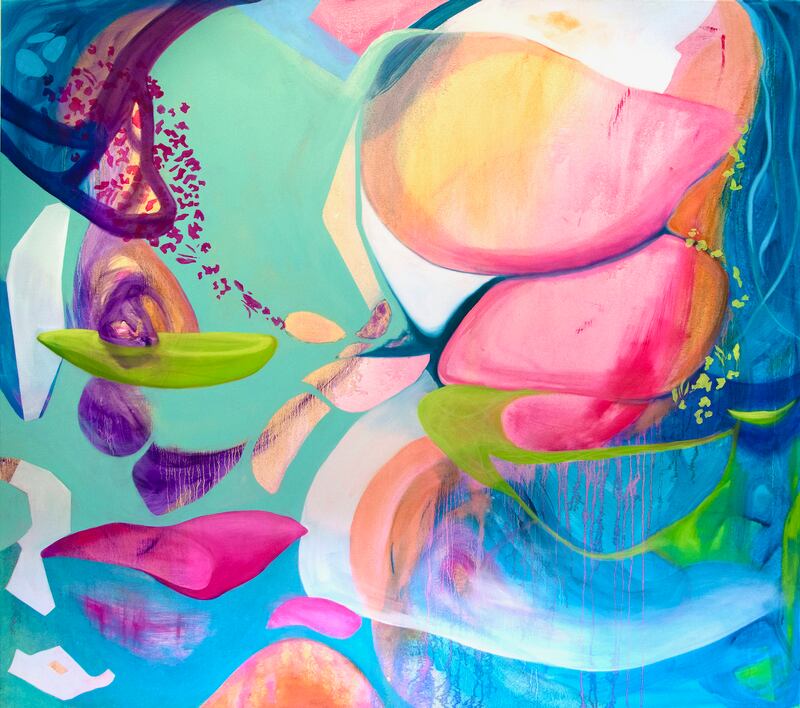
“When I was going to college I felt like: I’m going to be found out here. But then when I was actually there, I felt uplifted, really encouraged.” She is hugely grateful to tutors including Taffina Flood, Mark O’Kelly and Diana Copperwhite for their support. “I had backing like I have never experienced in my life from these people. I think they really got me, and encouraged me in my way of doing things.”
College helped by adding context and a framework for her avid reading. She says that it also gave her a sense of permission to be an artist, in that everything she does now feeds into her work. “You don’t have to go to get the piece of paper, it’s more like an affirmation. I did have a moment of ‘What am I doing here?’ but I was also aware that there was a bit of me that had this resolve. There was a strength in me. I wanted to get something from this, so I kind of ate up everything around me. I devoured information. I had this feeling of being so privileged to go at this stage. I don’t think I have ever felt more excited and energised by life than I am now.”
Karen Ebbs’s work is for sale, with prices in the range of €400-€4,000. Contact her for a portfolio, and see work on her website.













